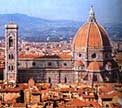|
Highlands Ranch High School - Mr. Sedivy
Highlands Ranch, Colorado

- Colorado History -
The Cheyenne Migration to Colorado
The Cheyenne Tribe
The Cheyenne were an Algonquin woods tribe from Minnesota and Manitoba.
The name "Cheyenne" came from the Lakota meaning "red talkers."
The Cheyenne call themselves people who are related to each other,
also known as the "Cut Arms" probably because of sun dance scars.
In the 17th century, they were centered in the valley
of the Minnesota River. Then pressure from another Algonquin tribe
forced them to Eastern North Dakota. They were hunters and fishers,
the women gathered berries, and they lived in wigwams that they built
from birch branches.

How a tipi was constructed. Click
the tipi for a more detailed diagram.
Indian Domino Theory
The Cheyenne were being pushed by the Chippena, and in turn, the Chippena
were being pushed by others. This is known as the Indian Domino Theory.

Indian tribes and their territories in 1840.
Click the map for a more detailed
enlargement.
During the 18th century, the Cheyenne tribe was on the
Cheyenne River, which is where they called home. While in eastern
North Dakota, they hunted and had agriculture. They had even acquired
some horses. Now, the Cheyenne were being attacked by both the Assiniboin
from New Mexico and the Sioux-Lakota. The Cheyenne were almost exterminated.
 
Left: Cheyenne painted for a sun dance.
Right: Sketch of a Cheyenne war cheif by Frederic Remington.
The Cheyenne continued west to badland country on the
Little Mo River in western North Dakota, settled in and built earth
lodges. But, the attacks continued. A story goes that the Assiniboin
chased a Cheyenne woman, and she fell off of a cliff. This is how
they got their first guns.
Changes in Cheyenne Society
The Cheyenne abandoned their earth lodges and "voeo repies" made of
animal skin. They stopped growing corn and headed to the Black Hills
of South Dakota. By now, the Cheyenne had many horses.

A mounted hunter draws his bow.
They had made the transition from woods tribe to Plains
tribe - the Buffalo replaced corn and skunk meat. Then the Cheyenne
became associated with another Algonquin tribe, the Arapahoe. Alegoned
sweet medicine gave them new cultures and rituals. The Cheyenne learned
how to form lodges and hunt. Bear Butte is a sacred place to the Cheyenne.
The Cheyenne moved further west following the buffalo
herds. They left the Black Hills to the Sioux-Lakota. The North Platte
River formed the area of the Northern Cheyenne, and after the split
the South Cheyenne took the South Platte Valley to the Arkansas valley.
One theory was Bent's Fort. Then the Cheyenne found new enemies: the
Crow, Commanche, Kiowa and Pawnee.

Pawnee earth lodge village in present day Nebraska.

A Pawnee warrior after a victory, with hands painted
on his chest as a sign that he
had killed an enemy in hand-to-hand combat.
The Cheyenne in Colorado and Wyoming
By 1849, the good times were gone for the Indians. With whites on
the Overland Trail heading for California and gold, it was only a
matter of time until the spark would turn to flames. The Teton Lakota
(Sioux) occupied northern Colorado and southern Wyoming. These were
the Plains Lakota.

A Sioux encampment. Horses were so crucial to the Plains
Indian's way of life
that the US Army made killing them a major objective.

Pictured in 1874 are 40,000 buffalo hides waiting to
be shipped to eastern markets.
Back to the top of page
- Colorado History In Depth
-
Lecture Notes, Reading, and Information:
| The Cheyenne Migration
to Colorado |
| The Gratlan Affair, Massacre, Fort Laramie
Treaty |
The Cheyenne Social Club
| A Cheyenne War Story: Wolf Road, the Runner
|
| Cheyenne Traditions and Beliefs, Sacred
Stories |
| Horses, Warriors, War Pipe, Sweatlodge
Ceremony |
| Cheyenne War Parties and Battle Tactics
|
| The Scalp Dance and Other Cheyenne Dances
|
Fort Union
| The Sante Fe Trail and Fort Union |
| Sumner - Ninth Military Department / The
First Fort Union |
| Early Arrivals to Fort Union, Daily Life
at Fort Union |
| Captain Grover - The New Fort Union, the
Confederate Threat |
| Fort Union Arsenal, William Shoemaker,
End of Fort Union |
Americans from the East
| Thomas Jefferson, the Louisiana Purchase
|
| The Expedition of Zebulon Pike |
| Pikes Peak or Bust / Colorado Gold Rush
|
Colorado's Role in the US Civil
War
| The Civil War, Fort Wise / Fort Lyon
|
| Mace's Hole, Colonel Canby, F.C.V.R.
| Fort Weld |
| The Pet Lambs, John Chivington |
| General Henry Sibly, Battle of Valverde,
Fort Union |
Cripple Creek District Labor Strikes
| The Western Federation of Miners / State
Militia |
| The 1893 - 1894 Strike | The
Strike of 1903 - 1904 |
| The Mine Owners Association |
| Crimes and Military Rule in the Cripple
Creek District |
| Marshall Law in Cripple Creek District
/ End of the Strike |
Early Cripple Creek District
| Photos, Fire, and Life in Cripple Creek
|
| Other Colorful Towns in the Cripple Creek
District:
Gillett - Colorado's Only Bullfight, Victor, Independence |
| A Guide to the Miners' Gritty Lingo
|
More Colorado History
Information
| Bent's Fort Photos, Personalities, Plans,
and More |
| What Was Easter Like at Bent's Fort?
|
| Colorado Trivia,
Miscellaneous Old Photos,
Western Personalities, Forts, and More |
| Lullabies for Jittery Cows - Cowboy Ballads
|
| Heraldry of the Branding Iron |
| Project
Aims to Clear Infamous Cannibal, Alferd Packer |
| Lead Gives Alferd
Packer's Story More Weight |
| Legendary
Colorado Love Stories: Baby Doe Tabor & More
|
| Colorado Pioneer Women: Elizabeth Byers
|
| Early Denver Jokes / The History of April
Fools' Day |
Back to the top of page
|



![]() 9375 South Cresthill Lane
9375 South Cresthill Lane ![]() Highlands Ranch, Colorado 80126
Highlands Ranch, Colorado 80126 ![]() 303-471-7000
303-471-7000









